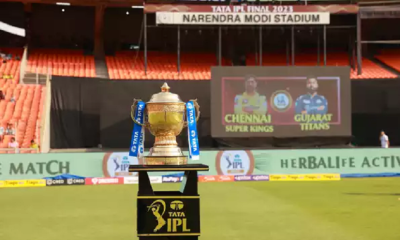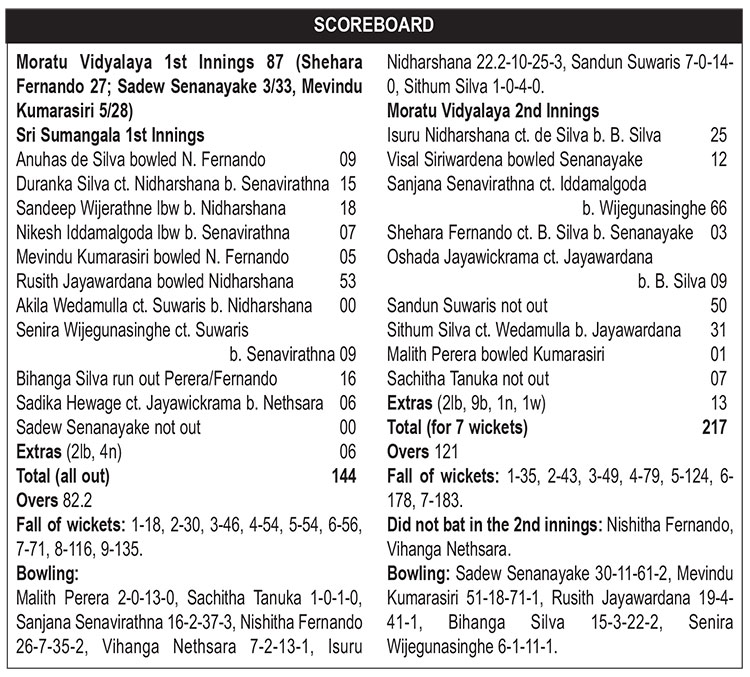Sports
An all girls cricket team in India breaks with tradition
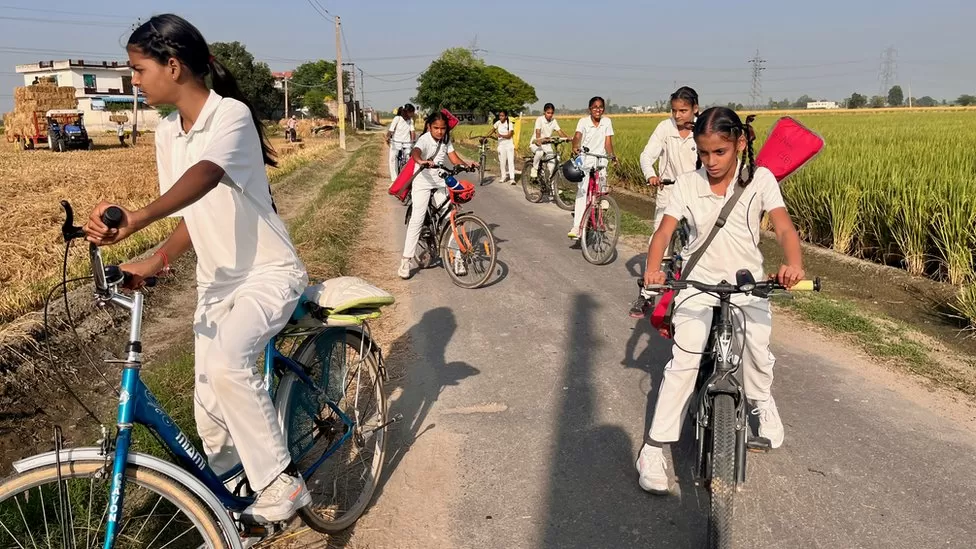
More than a dozen young girls from a small village cycle through farmland in the Indian state of Punjab.
Moving along a dirt pathway, dressed all in white, their excitement starts to build. Amid the miles of wheat fields, emerges the source of their joy: two cricket pitches, with plastic wickets and strip of concrete from where they can bat.
If it conjures images of the 1989 Hollywood film, Field of Dreams, it wouldn’t be too far from the truth. These 18 girls make up the Gulab Singh Cricket Team.
Cricket is the most popular sport in India, akin to a religion many would say. While it continues to remain a male-dominated game, things are changing.
Earlier this year, India started a women’s cricket premier league (WPL), a female version of the Indian Premier League (IPL). It has quickly become one of the world’s most lucrative women’s franchises, second only to the Women’s National Basketball Associate in the US.
Women in India have been active – and high performing – in cricket for many years. The WPL has catapulted them into mainstream popularity. Now they get the kind of media attention only reserved for men’s teams.
In October, the Board of Control for Cricket in India (BCCI), the governing body of Indian cricket. said all contracted female cricketers would be paid the the same match fee as men – a historic decision to promote “gender equality” in the country’s most-loved game.
Despite the changes on the national level, it can still be difficult for girls to be afforded the opportunity to play, especially in rural towns. “I created this cricket team to make their lives better,” says Gulab Singh Shergill, 35, who started this plucky little league four years ago.

Gulab Singh Shergill started the little league four years ago (pic BBC)
Partly to live out his failed dreams of playing cricket professionally and mostly because he really believes the girls in the village deserve a shot. “They don’t get permission to get a higher education, only getting to tenth class,” he says. After that, it’s a life of cooking and cleaning until they are married and sent to live with their in-laws.
His players are being exposed to something different. Every day, they come here, park their bikes under a tree behind the batting area and head to the grassy field where they start warming up.
Simranjit Kaur, 13, is learning to bowl. She runs down the pitch, rotates her arm and lets the leather ball out of her hand. Her height allows her to get speed and she says her accuracy is starting to improve. She is quiet and soft spoken, still very much the frame of a child but has had to grow up fast. After her mother died suddenly three years ago, her grandmother has become her primary caretaker, along with her two younger sisters, aged 10 and three. She joined the team a few years ago after seeing them play in a tournament in a neighbouring village with her father, a cricket enthusiast. “My father asked me if I would like to play,” she said in the courtyard of her house. “I said yes. So he asked the coach if I could join. And he said to come the next day.”
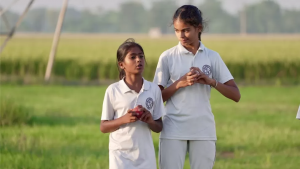
Simranjit Kaur (right) is learning to bowl (pic BBC)
In the morning before going to school, Simranjit crouches by a stove next to her grandmother, making rotis for the family. After school, instead of being stuck inside like many girls her age, with the support of her father and grandmother, she throws on her cricket whites and heads to practice, her sister in tow.
“There’s an ill thinking in villages,” says Baljeet Kaur, Simran’s grandmother. “They say that girls should be married and sent off to her in-laws, as if they have got no life. Sometimes people in village tell us why are you sending girls for playing. This is our wish and we want them to play.”
When asked how she feels when people discourage her, Simranjit says, “I don’t want to stop playing, this is my life. I feel really bad because I really like cricket, I really like playing.”
Cricket is not Shergill’s full-time job; he works as a constable in the local police force.
The players pay for nothing, he says. His entire salary goes to the girls’ team: paying for a part time coach, getting uniforms and equipment. He has donated a part of his land for the cricket pitch and hopes to build an office with a toilet one day.
It’s only been four years but in that time he’s been able to expose these girls to a life beyond the bounds of their village.
“Now we are also able to have matches between girls and boys,” he says. “That makes them proud of themselves. Now they are able to tell their parents that ‘I can do it.'”
For these girls, playing cricket is a break from the societal duties that come with being a girl. For a few hours a day, they shed gender norms and are able to be kids.
“When we are playing a match, I feel like I am wearing a jersey for Team India,” says 10-year-old Harsimrit Kaur. “When I hit a six, I know I did it for India. When I play I feel only one thing, that I am not playing for India now but I will play for India’s cricket team someday.”
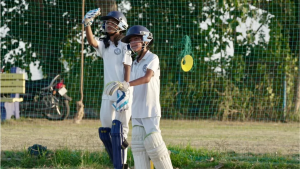
Harsimrat Kaur, 10, says playing a match feels like ‘I am wearing a jersey for Team India’ (pic BBC)
Shergill has the support of strong women too. His eldest sister, Jasveer Kaur, affectionately called Bua, is one of Shergill’s biggest champions. She comes to the pitch at least once a week to comfort players that get hurt or just to watch. She knows too well the pressures of being a woman in this society.
Married at 19, becoming a mother shortly thereafter, Jasveer cries at the thought of any of these girls meeting the same fate. “All my feeling and hopes were suppressed because I was a woman,” she says. “I was asked to work at home and cook also. Now I want that if I can help girls to do something I don’t need anything else in life. I want to use all my power to help girls grow.”
Shergill may be selling a dream to become a professional cricket player and represent India around the world. But the lessons he is teaching the these young women is so much more valuable.
“There is no difference between a girl and a boy,” says Simranjit. “Whatever boys can do, girls can do too.”
(BBC)
Sports
IPL 2025: All-round Delhi Capitals secure second win on the bounce
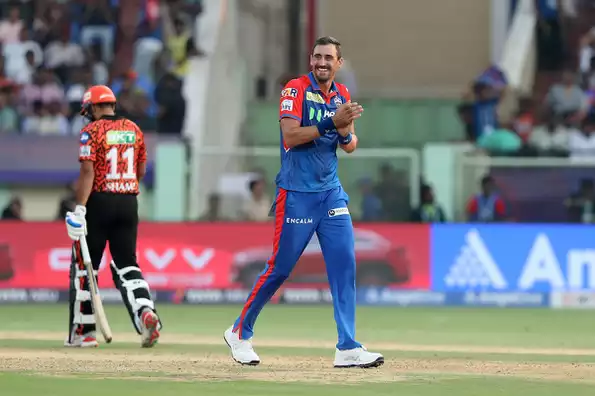
Sunrisers Hyderabad’s philosophy of living by the sword and dying by it led them to their second successive defeat, against Delhi Capitals in Vizag. Mitchell Starc picked his maiden T20 fifer to keep SRH down to 163 despite Aniket Verma’s six-hitting exhibition in a 41-ball 74 before the DC top-order chased it down with 7 wickets and four overs to spare.
Where the match was won?
SRH were hamstrung in the PowerPlay with four dismissals. They got six more than Delhi Capitals did in this phase but it was the repercussions of this phase that led them to an under-par total.
The PowerPlay difference
| Parameters | SRH | DC |
|---|---|---|
| Score | 58/4 | 52/0 |
| Run-rate | 9.67 | 8.67 |
| 4s/6s | 7/1 | 4/3 |
Sunrisers Hyderabad
Powerplay: Starc removes top-order
Phase score: 58/4 [RR: 9.67, 4s/6s: 7/1]
Pat Cummins became the first captain this season to bat first after winning the toss but his high-flying top-order was quickly dismantled by Mitchell Starc. Abhishek Sharma was run out after a mix-up between the openers after which Mitchell Starc took out Ishan Kishan, Nitish Reddy and Travis Head by the fifth over. With that, since IPL 2024, Starc has 8 wickets in 11 overs against SRH in PowerPlay. SRH should’ve been five down before the end of the PowerPlay, but Abishek Porel put down a catch to offer Aniket Verma a reprieve.
Middle-overs: Aniket flies but DC retain control
Phase score: 82/3 [RR: 9.11, 4s/6s: 4/6]
Aniket flexed his muscles against DC’s spinners, starting out by hitting Vipraj Nigam for a six and a four in the seventh over. In the next over, he tonked Axar for two successive sixes and also went after Mohit Sharma. Heinrich Klaasen then welcomed Kuldeep Yadav with a straight six to press on with the fifth-wicket stand. They took the team past 100 by the halfway stage but DC hit back through an excellent catch from Vipraj Nigam that sent the South African back. Kuldeep and Axar then bowled three excellent overs, conceding just eight in it. Aniket meanwhile got to his maiden IPL half-century and went after Axar once again in a 17-run 15th over.
Death overs: Starc bundles out SRH with fifer
Phase score: 23/3 [RR: 6.27 4s/6s: 1/1]
Aniket departed in the 16th over chasing another big six, falling for a 41-ball 74. Starc then came back to quickly wrap the innings up in the 19th over, dismissing Harshal Patel and Wiaan Mulder. While SRH finished on 163, the Aussie quick walked away with figures of 5-35, his first fifer in T20 cricket.
Delhi Capitals
PowerPlay: SRH toil in wicketless phase
Phase score: 52/0 [RR: 8.67, 4s/6s: 4/3]
Faf du Plessis and Jake Fraser-McGurk started well, taking on all four of the bowling options that Cummins threw at them in the PowerPlay. Harshal Patel bowled a good first over but Cummins himself was taken apart for 13 runs. Shami started well but erred in his second to let DC control the game at the start of their chase.
Middle-overs: Zeeshan Ansari strikes thrice but DC march on
Phase score: 98/3 [RR: 10.88, 4s/6s: 9/4]
SRH’s young leggie Zeeshan Ansari picked three wickets but it didn’t alter the course of the proceedings as the hosts galloped along towards the target through different batters. Du Plessis got to a 26-ball half-century while McGurk too showed urgency before falling to the spinner. DC had 96 on the board at the halfway stage, being comfortably ahead of the asking rate. KL Rahul marked his DC debut by smashing Shami for two fours and a six in the 11th over. Abishek Porel then walked out and seamlessly carried on with the run-making, hitting Ansari for a four and a six in the 14th over. DC got to 150/3 in 15 overs, with only 13 more to get at the death.
Death-over: Six balls to wrap it up
Phase score – 16/0 [RR: 16.00, 4s/6s: 2/1]
Porel went after Wiaan Mulder in the 16th over to complete the commanding victory.
Brief Scores:
Sunrisers Hyderabad 163 in 18.4 overs (Aniket Verma 74, Heinrich Klaasen 32, Travis Head 22; Mitchell Starc 5-35, Kuldeep Yadav 3-22, Mohit Sharma 1-25) lost to Delhi Capitals 166/3 in 16 overs (Faf du Plessis 50, Jake Fraser-McGurk 38, Abishek Porel 34*, KL Rahul 15, Tristan Stubbs 21*; Zeeshan Ansari 3-42) by 7 wickets
What next?
Sunrisers head to Kolkata where they face KKR on April 3 while Delhi Capitals have a longer break before taking on CSK in Chennai on April 5.
Latest News
IPL 2025: Rana, Hasaranga give Rajasthan Royals first points with tight win
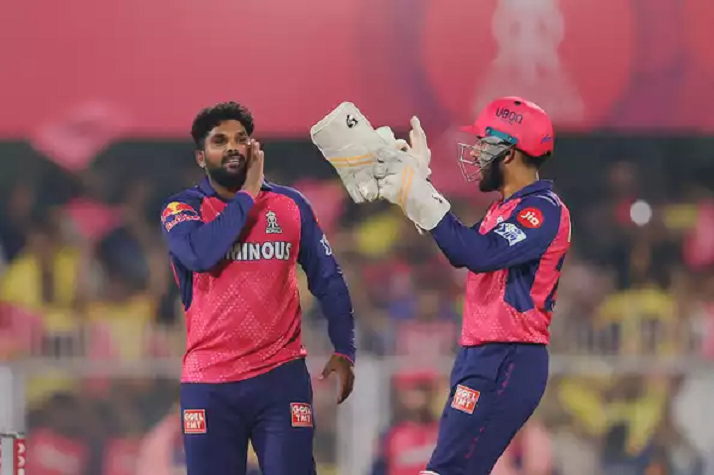
Rajasthan Royals clinched a thrilling six-run victory over Chennai Super Kings to bring up their first win of IPL 2025. Starring with the bat for the Royals was Nitish Rana who hit a powerful 81 before Wanindu Hasaranga helped defend the total with crucial strikes right through .
Where was the match won?
While Rana’s onslaught in the powerplay set RR up to get a total that was above-par, CSK had managed to pull things back at the back-end. In the chase, however, RR managed to keep things in control with regular strikes right through. The chief architect of that was Wanindu Hasaranga who struck at important junctures not allowing CSK to get away.
RAJASTHAN ROYALS
Powerplay – Nitish Rana runs amok
Phase score – 79/1 [RR: 13.16; 4s/6s: 9/5]
Nitish Rana found himself coming in just the first over of the innings after Yashasvi Jaiswal chipped a simple catch to mid off. What had started off well for Khaleel Ahmed and CSK, who had opted to bowl, soon took a turn for the worse. Rana hit the second ball he faced for a boundary to get going. Jamie Overton, making his IPL debut, was carted for 14 runs in his first over and 16 in his next as CSK struggled to get their lengths right. In a bid to shake up things, R Ashwin was brought in but Rana employed the sweep behind square to good effect as RR picked up 19 in that over. Khaleel erred in lengths once again in his third over of the powerplay and allowed Rana to cash in further on a surface that was not offering much for the bowlers. Out of RR’s 79 inside the powerplay, Rana alone accounted for 58.
Middle overs – Spinners pull things back for CSK
Phase score – 66/4 [RR: 7.33; 4s/6s: 4/2]
Rana remained CSK’s biggest threat from one end but Noor Ahmed managed to strike straightaway at the other bagging a well-set Sanju Samson caught at long off. It helped apply the brakes on the scoring-rate although RR had a good base already. Rana though was taking one of CSK’s main weapon in R Ashwin out sweeping him for another four and a six when the offspinner returned. But Ashwin had the last laugh throwing one wide when Rana danced down the track early to be stumped for a 36-ball 81. This helped further CSK’s cause as they applied the squeeze through their spinners. Both Ahmed and Ravindra Jadeja chipped in getting Dhruv Jurel and Wanindu Hasaranga caught off mishits as CSK bounced back successfully.
Death overs – RR stutter at the finish
Phase score – 37/4 [RR: 7.4; 4s/6s: 2/2]
Riyan Parag and Shimron Hetmyer, who was dropped first ball, were the only other batters from RR who found the boundaries apart from the top-order. But neither could get them at the frequency that RR would have liked. Parag was yorked by Pathirana in the 18th over while Hetmyer was caught in the final over. Through it all CSK stitched together overs without boundaries that helped keep them in the game. RR still managed to get past 180 thanks to the initial onslaught from Rana.
CHENNAI SUPER KINGS
Powerplay – Blows exchanged in tight phase
Phase score – 42/1 [RR: 7; 4s/6s: 6/1]
The Guwahati pitch began to assist the pacers more as the game progressed and both Jofra Archer and Tushar Deshpande extracted appreciable bounce from it straihgtaway. The former got one of the balls to kick up and angled across Rachin Ravindra to have him caught behind. Shot-making was not easy through the line in this phase with Ruturaj Gaikwad also being struck on the elbow once. After Archer’s maiden over to start, CSK had put on only 5 on the board after the first three overs. But gradually both Gaikwad and Rahul Tripathi found other ways to get the boundaries. They began to use the pace behind square on the onside and put the bowlers off their lengths. As a result, CSK got some useful boundaries in the latter half of the powerplay which helped get the chase back on track.
Middle overs – Hasaranga keeps CSK in check
Phase score – 80/3 [RR: 8.88; 4s/6s: 6/3]
This was a phase of play that CSK were threatening to break free with wickets in hand. But Rajasthan were almost single-handedly kept in the game by Wanindu Hasaranga’s three strikes through the middle overs. He struck with his first ball having Tripathi caught at deepmidwicket. But CSK had their best spin-hitter in Shivam Dube walk in and he took the attack straight back to Hasaranga hitting him for a six down the ground. He continued the onslaught in Hasaranga’s next over hitting him for a four and a six, readying to get that one big over that could tilt the equation. But Dube fell immediately after thanks to a magical catch at cover by a diving Riyan Parag. But CSK hit back through their skipper Gaikwad who picked up three boundaries off Kumar Kartikeya to keep the run-rate up. When he needed more support at the other end, Vijay Shankar briefly promised to do so hitting Hasaranga for a six but only to be fooled by a googly off the very next ball. Gaikwad brought up his fifty soon after but heading into the final five overs, CSK needed 61 with a set Gaikwad being their biggest bet.
Death overs – CSK fall just short
Phase score – 54/2 [RR: 10.8, 4s/6s: 2/4]
Hasaranga once again played his part in the final overs with Gaikwad trying to take charge. CSK’s captain managed to tonk Hasaranga down the ground for a crucial six but became the legspinner’s fourth victim of the night when he holed out to long on next ball to fall for 63. Hasaranga finished with figures of 4-35 and ensured that he played a major part in RR’s defence of a middling total. For CSK, the onus lied on Ravindra Jadeja and MS Dhoni to make a match out of this in the final stages of the game. RR got back Matheesha Theekshana for the 18th over and the spinner conceding only six with no boundaries, leaving CSK needing 39 off 12. Both the experienced campaigners picked up a six apeice from Tushar Deshpande’s penultimate over and got 19 in all leaving Sandeep Sharma to defend 20 in the final over. Interestingly, RR had turned to him even though jofra Archer [3-1-13-1] had an over left. But to their relief, Sharma saw Dhoni drag a low full toss wide of deepmidwicket where Hetmyer took a sharp running catch under pressure. Sharma saw off the threat from debutant Overton, who lofted him for one six, to eventually take RR home as CSK fell 6 runs short.
Brief Scores:
Rajasthan Royals 182/9 in 20 overs (SanjuSamson 20, Nitish Rana 81, Riyan Parag 37, Shimron Hetmyer 19; Khaleel Ahmed 2-38, Ravichandran Ahwin 1-46, Noor Ahmed 2-28, Matheesha Pathirana 2-28, Ravindra Jadeja 1-10) beat Chennai Super Kings 176/6 in 20 overs (Rahul Tripathy 23, Ruturaj Gaikwad 63, Shivam Dube 18, Ravindra Jadeja 32*, MS Dhoni 16, Jamie Overton 11*; Wanindu Hasaranga 4-35, Jofra Archer 1-13, Sndeep Sharna 1-42) by 6 runs
What next?
Both teams have a five day-gap before their next encounter on April 05 when CSK host the Delhi Capitals while Rajasthan Royals go to Mullanpur to take on the Punjab Kings on the same day.
Sports
Moratu Vidyalaya salvage pride thanks to Sandun’s marathon innings
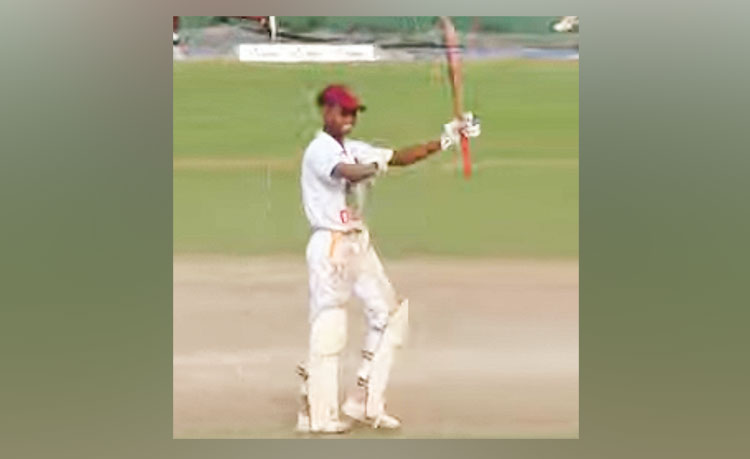
A marathon innings by Sandun Suwaris paved the way for Moratu Vidyalaya to force a draw to the 73rd Battle of the Golds Big Match against Sri Sumangala College Panadura at De Soysa Stadium Moratuwa on Sunday.
Batting for the second time, Moratu Vidyalaya had barely closed the first innings deficit when Suwaris came to bat. They had just six wickets in hand with more than two sessions remaining on the final day when Suwaris rose to the occasion with a fine rearguard action.
The middle order batsman held their batting together with a marathon innings. He faced 258 balls for his unbeaten half century which included just a solitary boundary.
Moratu Vidyalaya fared badly in the first innings as they were bowled out for 87 runs with Mevindu Kumarasiri taking five wickets for 28 runs.
In their essay Sri Sumangala too struggled for runs but a half century by Rusith Jayawardana helped them reach 144 runs.
Earlier Sanjana Senavirathna played a crucial role top scoring with 66 runs. His knock included four fours and two sixes.The Battle of the Golds big match was played as a three day encounter for the first time this year.
-

 Sports2 days ago
Sports2 days agoSri Lanka’s eternal search for the elusive all-rounder
-

 Features6 days ago
Features6 days agoCelebrating 25 Years of Excellence: The Silver Jubilee of SLIIT – PART I
-

 Business4 days ago
Business4 days agoAIA Higher Education Scholarships Programme celebrating 30-year journey
-

 Business6 days ago
Business6 days agoCEB calls for proposals to develop two 50MW wind farm facilities in Mullikulam
-

 News3 days ago
News3 days agoGnanasara Thera urged to reveal masterminds behind Easter Sunday terror attacks
-

 Features6 days ago
Features6 days agoNotes from AKD’s Textbook
-

 News2 days ago
News2 days agoComBank crowned Global Finance Best SME Bank in Sri Lanka for 3rd successive year
-

 Features2 days ago
Features2 days agoSanctions by The Unpunished


